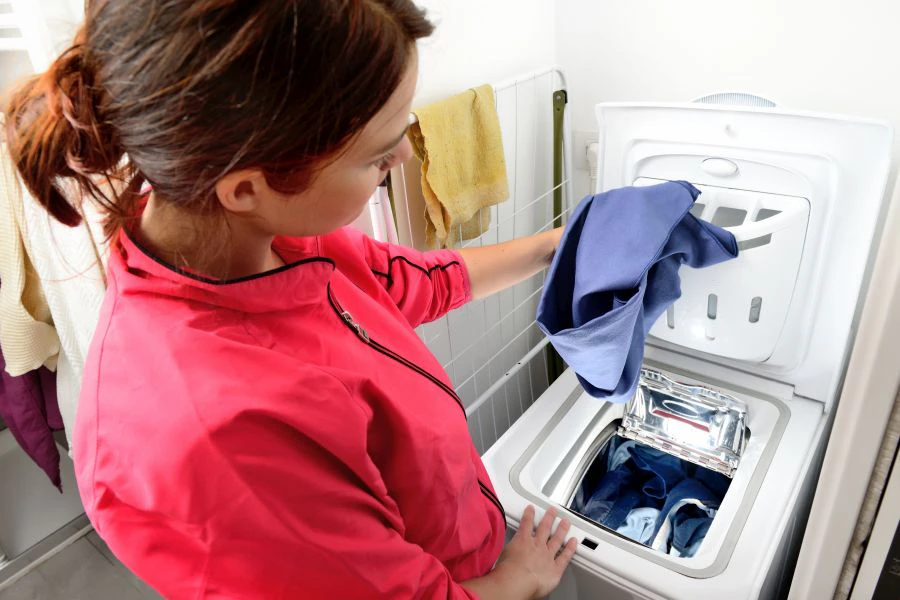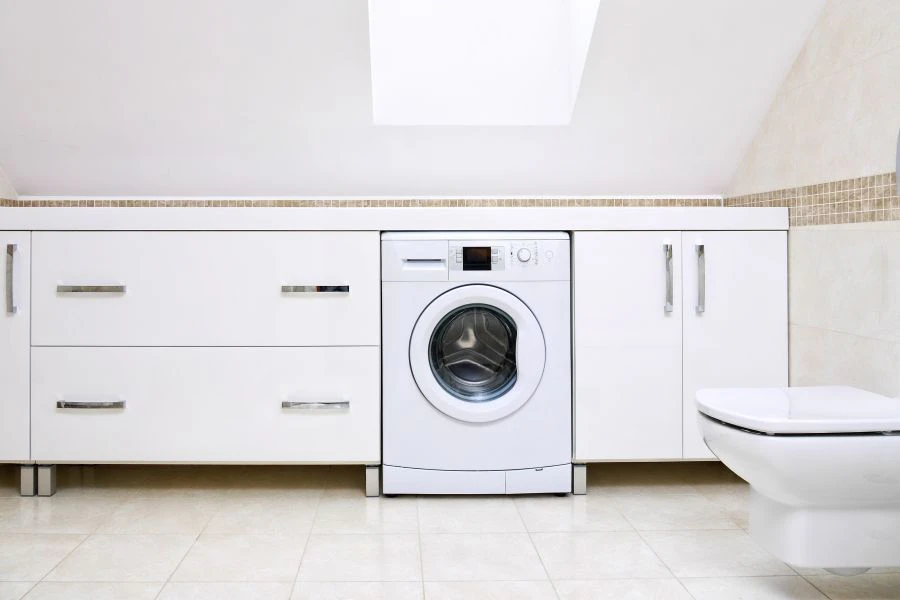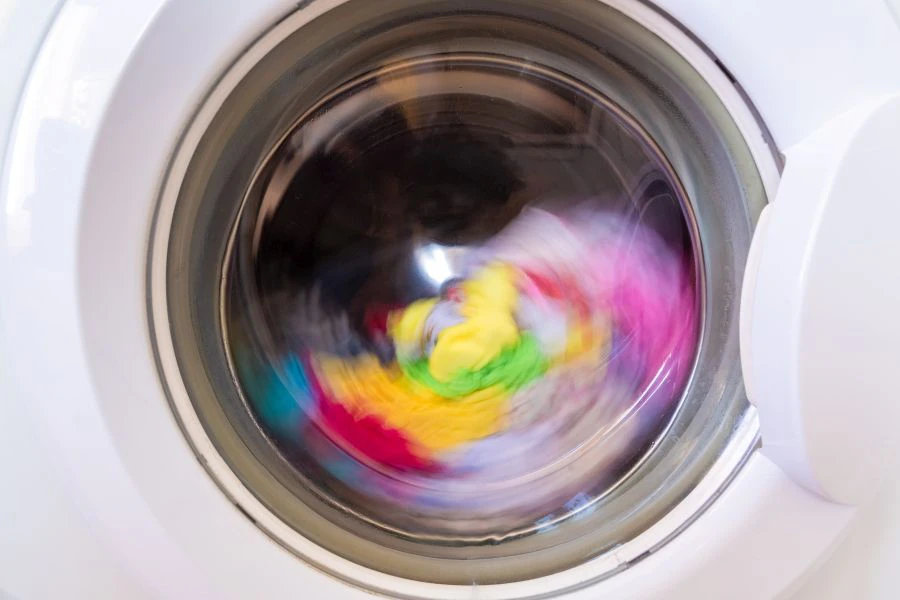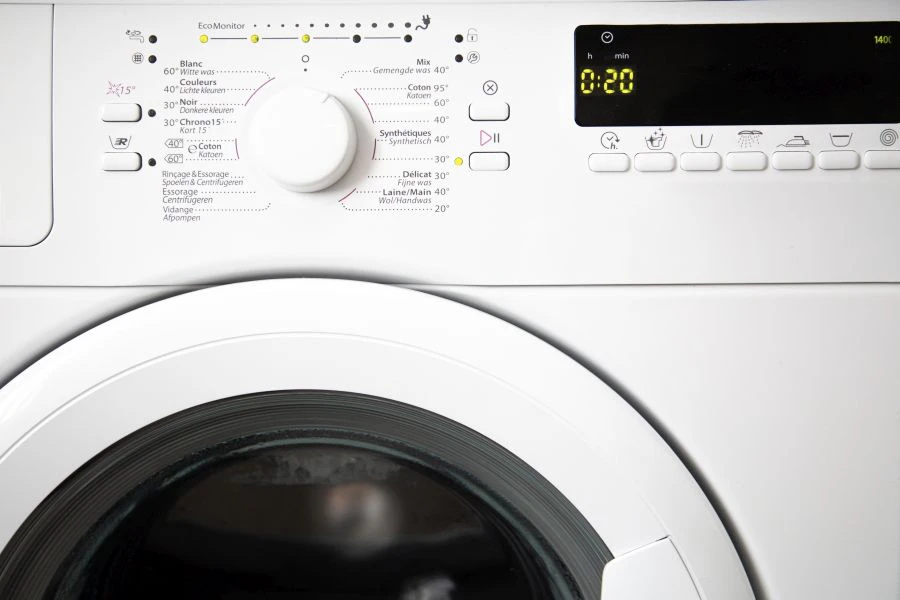
APPLIANCES
Standard or slim? It depends on the available space!
Like all large household appliances, washing machines are available in several widths. The standard size is 60 cm, as for dishwashers, dryers, etc. For small spaces, there are smaller devices ("slim", "compact", "narrow"), with a width ranging from 40 cm to 50 cm. They should be preferred if there is little space, and this is the best choice for student studios, for example!

Front or top loading?
Some of these washing machines are loaded from above, others through a traditional porthole on the front. Depending on the type of loading, it is therefore necessary to ensure, in confined spaces, to have sufficient clearance when opening the door. Regardless of this criterion, unless you suffer from back pain, front loading is more practical, since you can put objects on top, or even superimpose another device on it if necessary, with a kit provided for this purpose.
Capacity according to your household
In addition to the width, there is also the question of capacity, or the quantity of laundry that can be washed all at once. We recommend 5 kg for a single person, 7 kg for a couple and 10 kg for a family. There are larger capacity machines (12 kg), but they are bulkier.
According to these criteria, for a young single adult, the first instinct would be to turn to compact devices. However, if space is not an issue, you might as well consider purchasing a washing machine of standard width and capacity. A washing machine can be kept for many years. If there are two of you in the future, you will quickly be limited by a reduced capacity. In addition, a washing machine of small capacity will not be suitable for washing curtains, duvets, etc.
Built-in or not?
As long as the top of a washing machine can be removed, which is usually the case, it can be slid under the kitchen worktop. But if you want to go further in integrating all major appliances of your kitchen, there are so-called "built-in" models, the front of which is fitted with fixings which can accommodate a decorative door.
Spin speed
In the drum of the appliance, the laundry is spun by rotation, as in a salad basket. While the fastest speed was 800 rpm a few years ago, today's machines spin laundry at 1,200 rpm. For the fastest models, this speed can go up to 1600 rpm. The higher the spin speed, the faster the laundry will dry. Contrary to popular belief, a higher speed is less damaging to the laundry because it spins faster and rubs less on the wall of the drum when it is pressed against it. The only (small) disadvantage is that the very fast spinners are a little noisier.


Energy consumption
Like all household appliances, washing machine consumption is subject to an official classification, rated from A to A +++. This takes into account water and electricity consumed. In general, devices are more and more virtuous, in particular thanks to the development of “eco” programs that manage energy more and more intelligently.
Class A +: if compared to class A : up to 10% : energy savings
Class A ++: if compared to class A : up to 20% energy saving
Class A +++: if compared to class A : up to 30% energy savings
Programs
Depending on your habits, the availability of programs specific to certain textiles should be taken into account (linen, silk, etc.). In the case of a high-speed spinning machine, also make sure that a mode that minimizes the risk of wrinkled laundry is offered.
Quieter is better
Like energy consumption, noise emitted by devices is subject to an official standard expressed in dB (decibels), indicated on the performance label. Below 50 dB, a washing machine is silent. Some models can approach 40 dB. The quietest washing machines are usually equipped with induction motors, direct drive and also an anti-vibration structure.
Washer-dryer combination
A washer-dryers or a combined washing-drying machine is useful when you are short of space and absolutely want to be able to tumble dry your laundry. However, current technology does not allow one full load to dry all at once. Depending on your habits and the type of textiles you wear, this is an option to take into account.
When purchasing, a washer-dryer will be less expensive than two separate appliances, but much more consumption intensive in electricity and water.


Availability of spare parts
When properly maintained, a washing machine can run for a decade or two without problems. But if a breakdown does occur, it is important that the availability of spare parts is ensured over time. A criterion to be taken into account, but fortunately, manufacturers or sellers indicate it more and more frequently. This is the case with Thomson devices with spare parts availability for 10 years.

 Denmark (Danish)
Denmark (Danish)  Deutschland (Deutsch)
Deutschland (Deutsch)  España (Español)
España (Español)  France (Français)
France (Français)  Italia (Italiano)
Italia (Italiano)  Nederlands (Dutch)
Nederlands (Dutch)  Polska (Polski)
Polska (Polski)  Russia (Russian)
Russia (Russian)  Sweden (Swedish)
Sweden (Swedish)  Turkey (Turkish)
Turkey (Turkish)  Ukraine (English)
Ukraine (English)  United Kingdom (English)
United Kingdom (English)  USA (English)
USA (English)  China (Chinese)
China (Chinese)  Hong Kong (English)
Hong Kong (English)  India (English)
India (English)  Indonesia (English)
Indonesia (English)  Lebanon (English)
Lebanon (English)  Saudi Arabia (English)
Saudi Arabia (English)  Thailand (English)
Thailand (English)  Vietnam (English)
Vietnam (English)  Algeria (Français)
Algeria (Français)  Egypt (English)
Egypt (English)  Australia (English)
Australia (English)